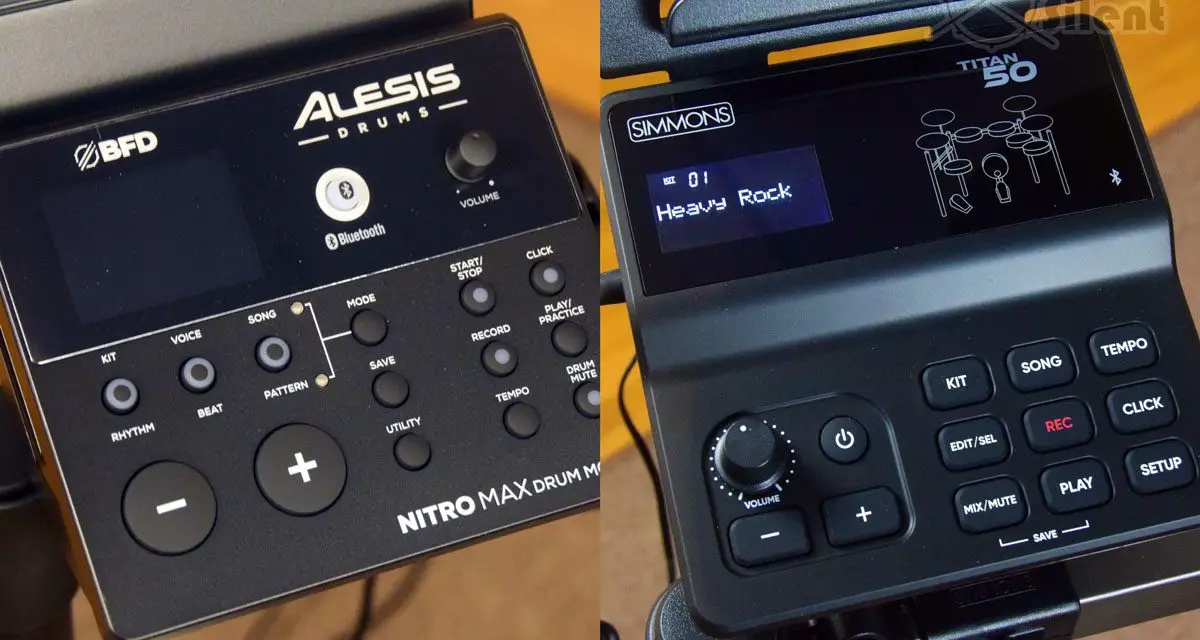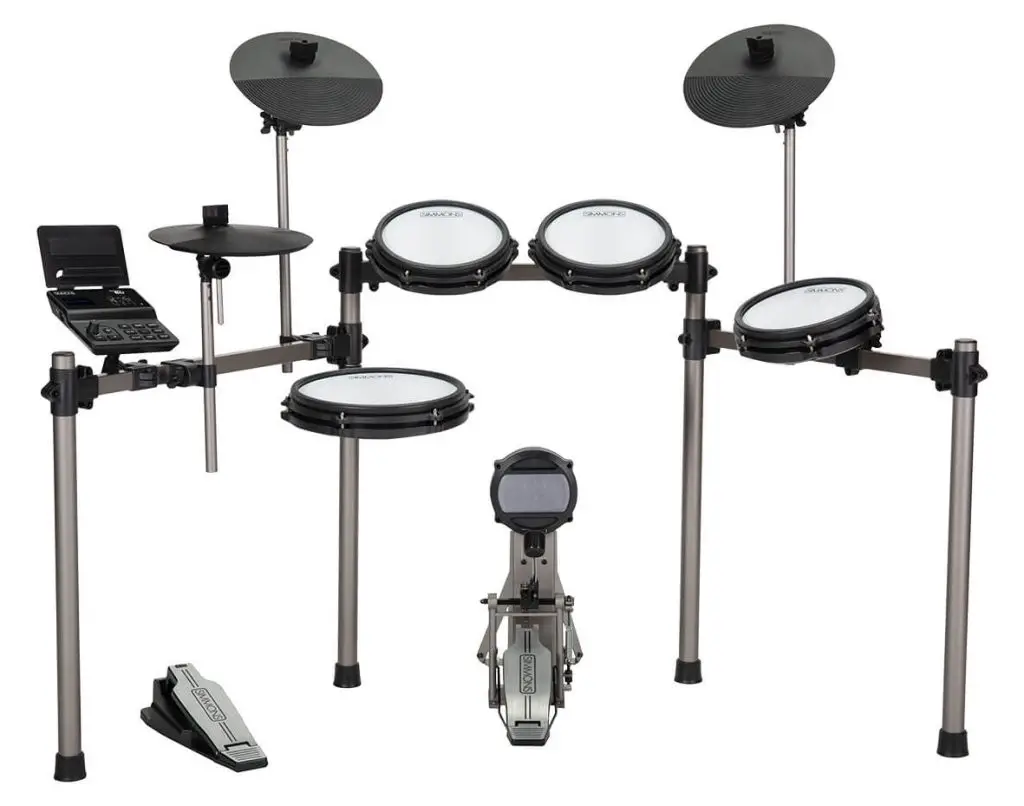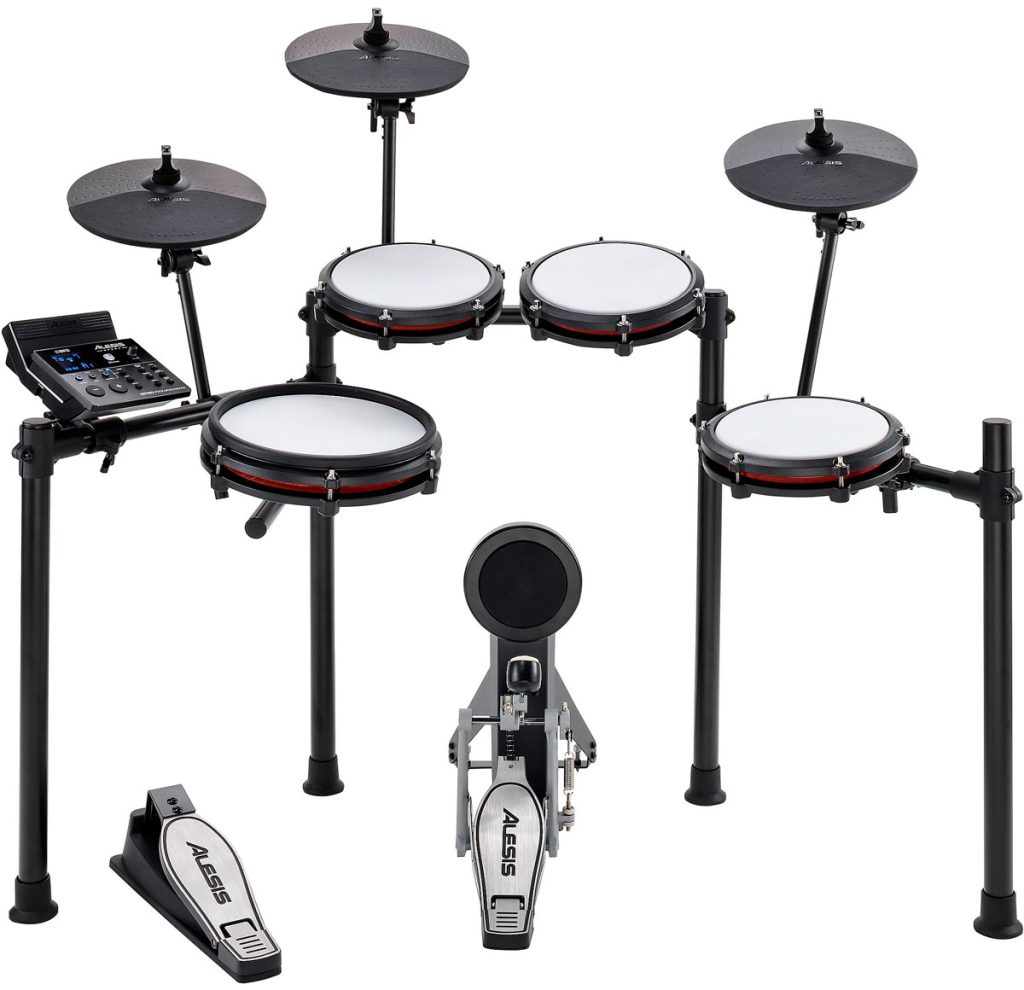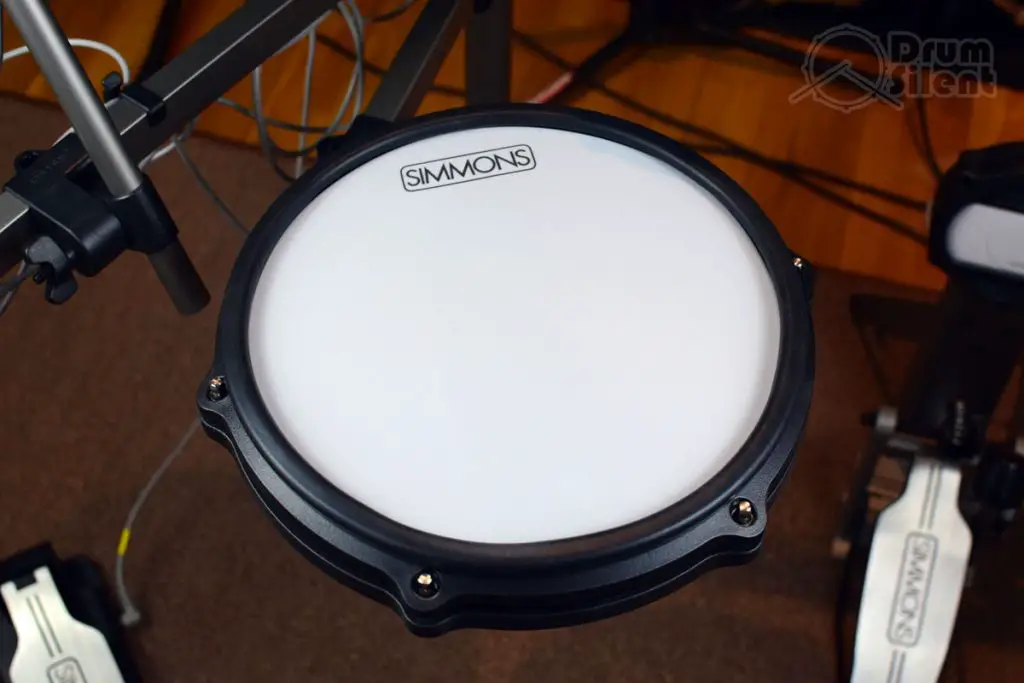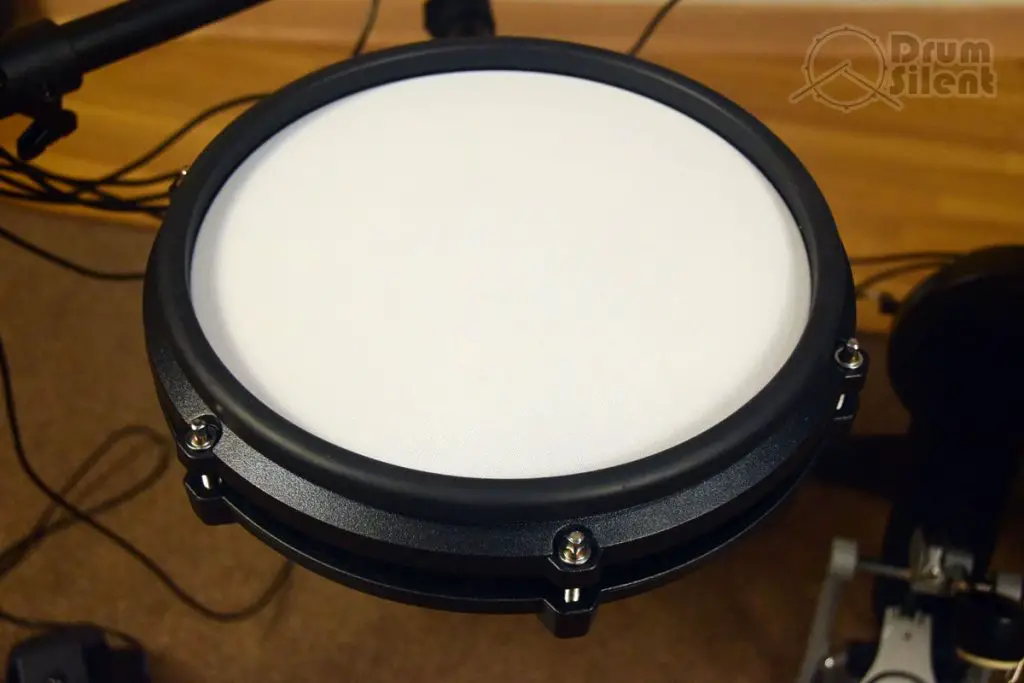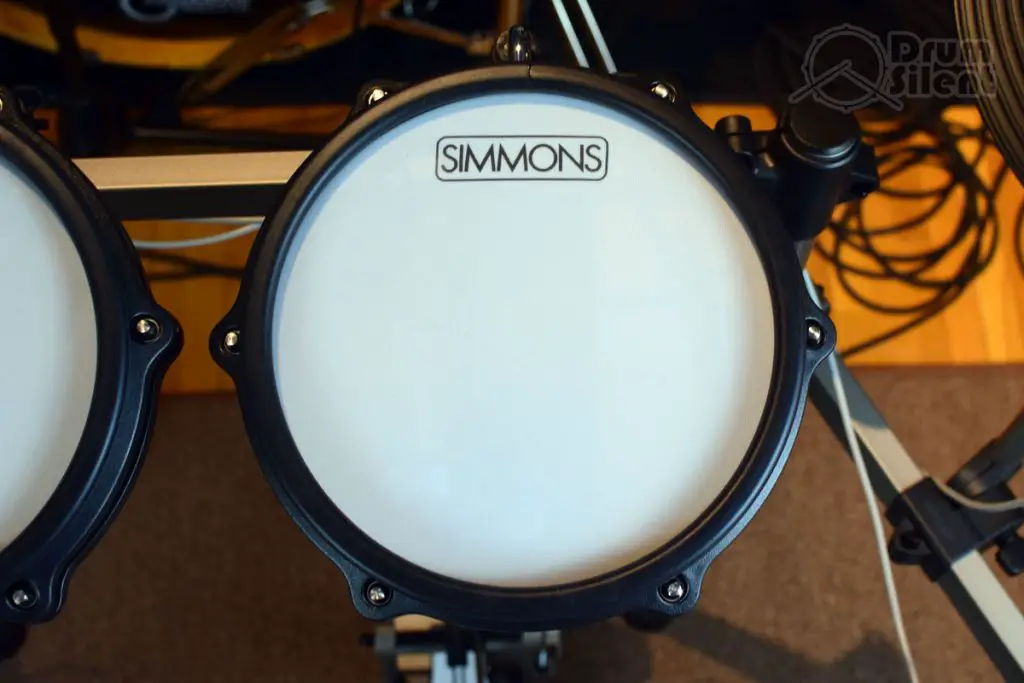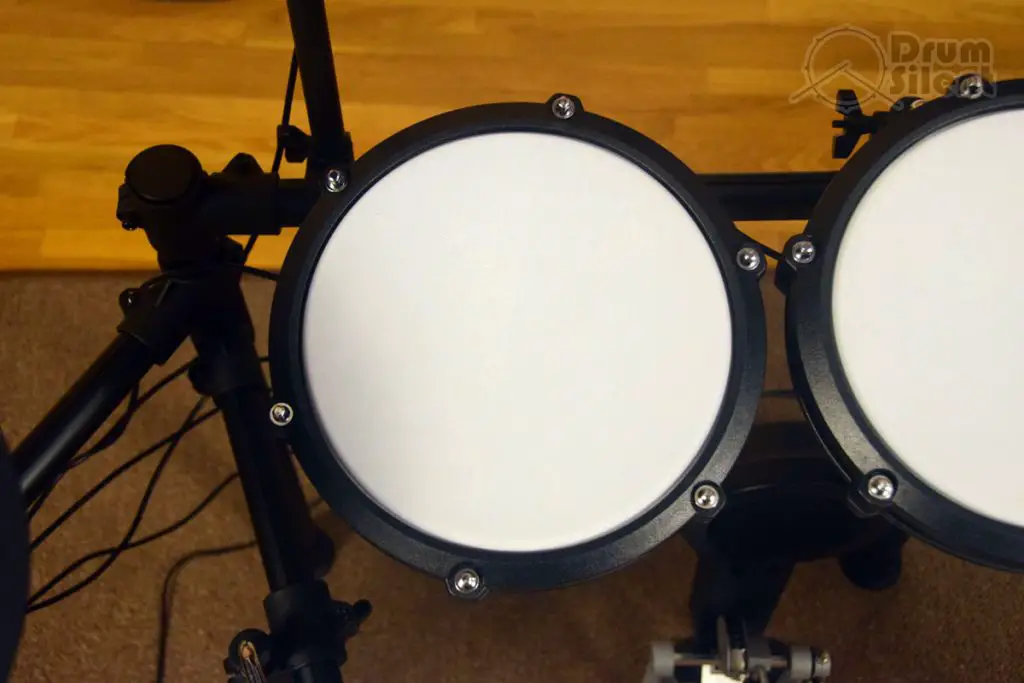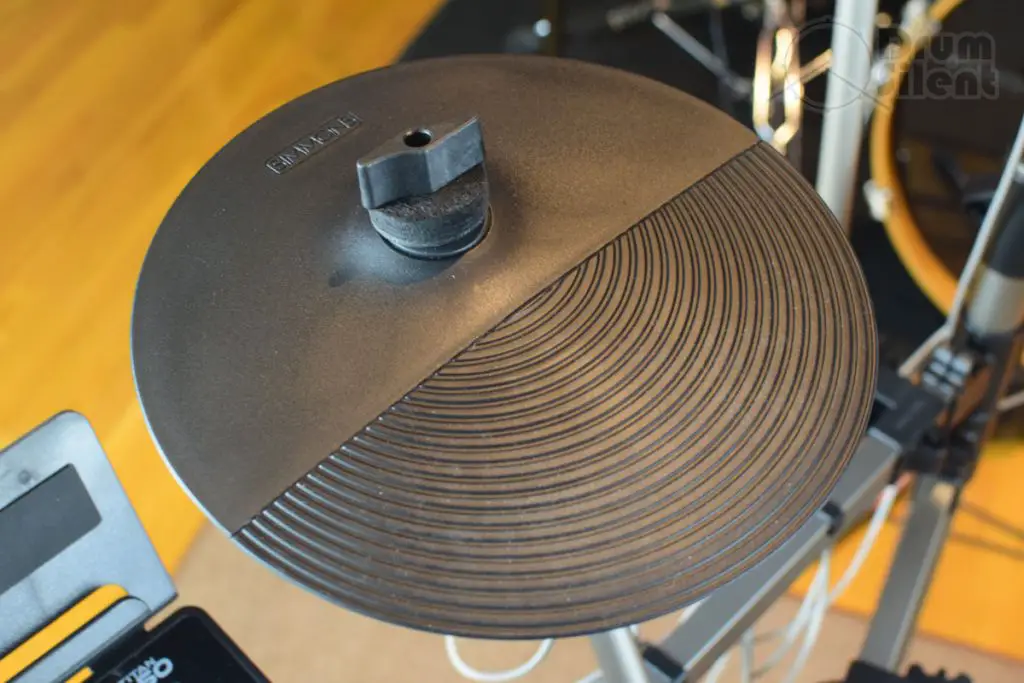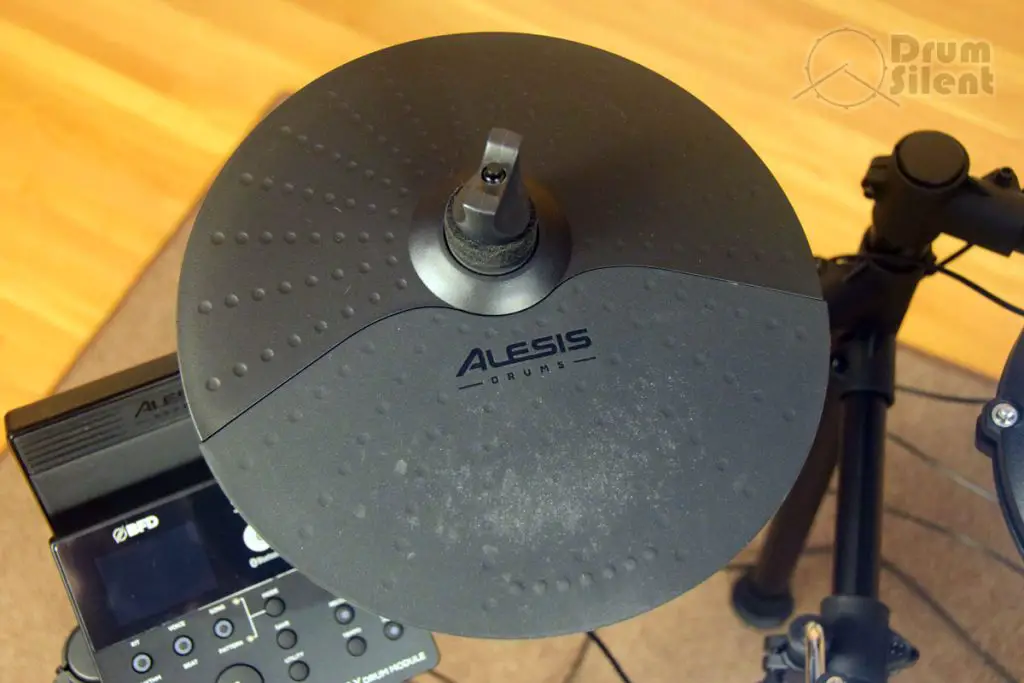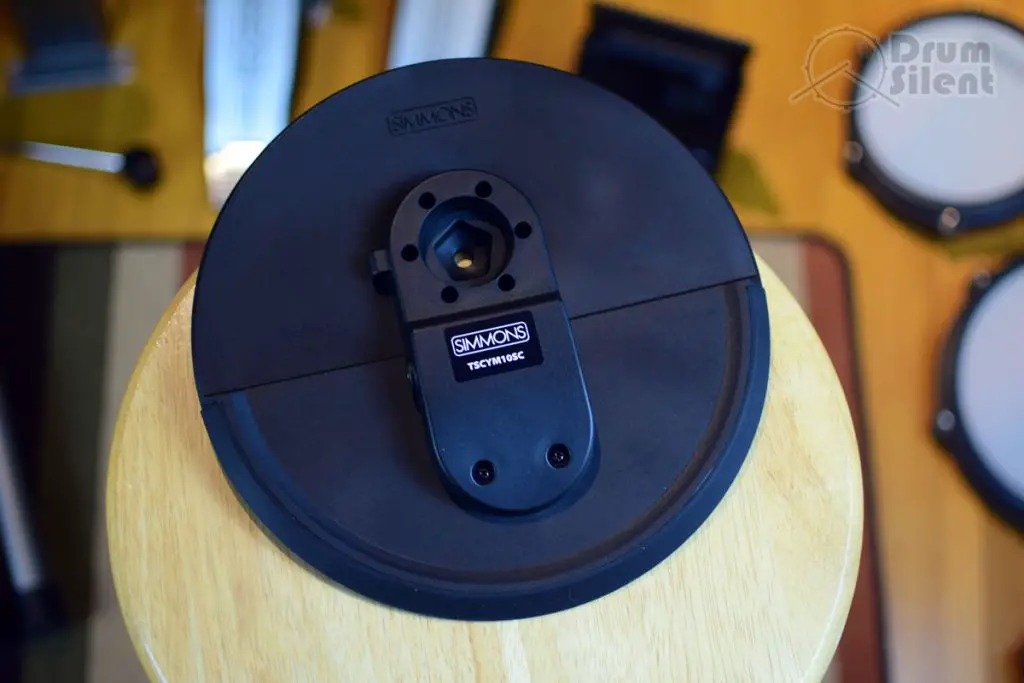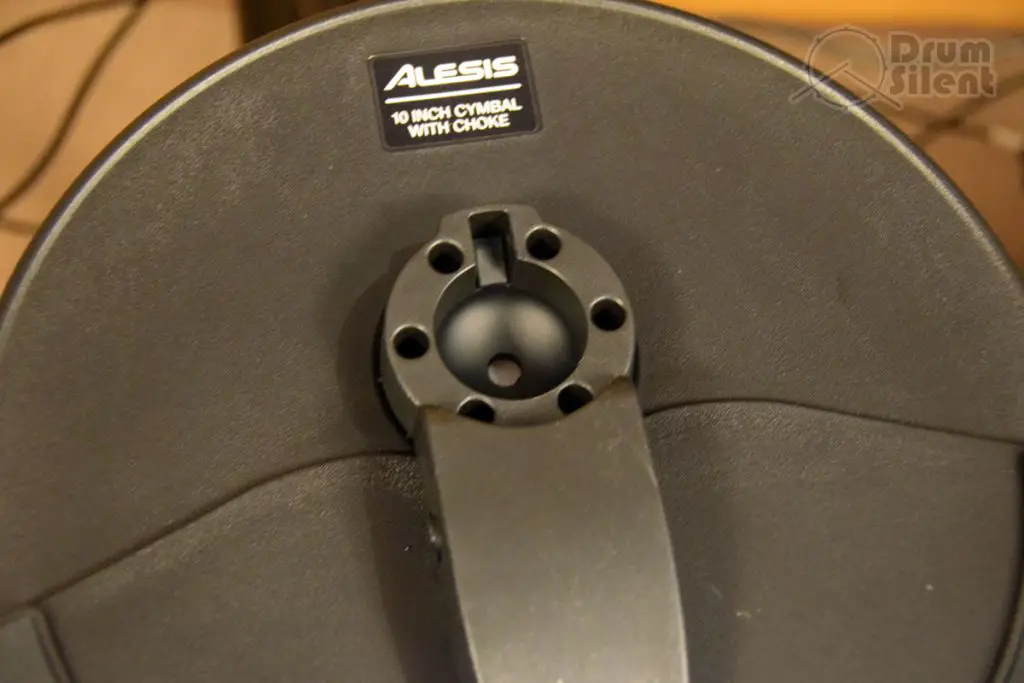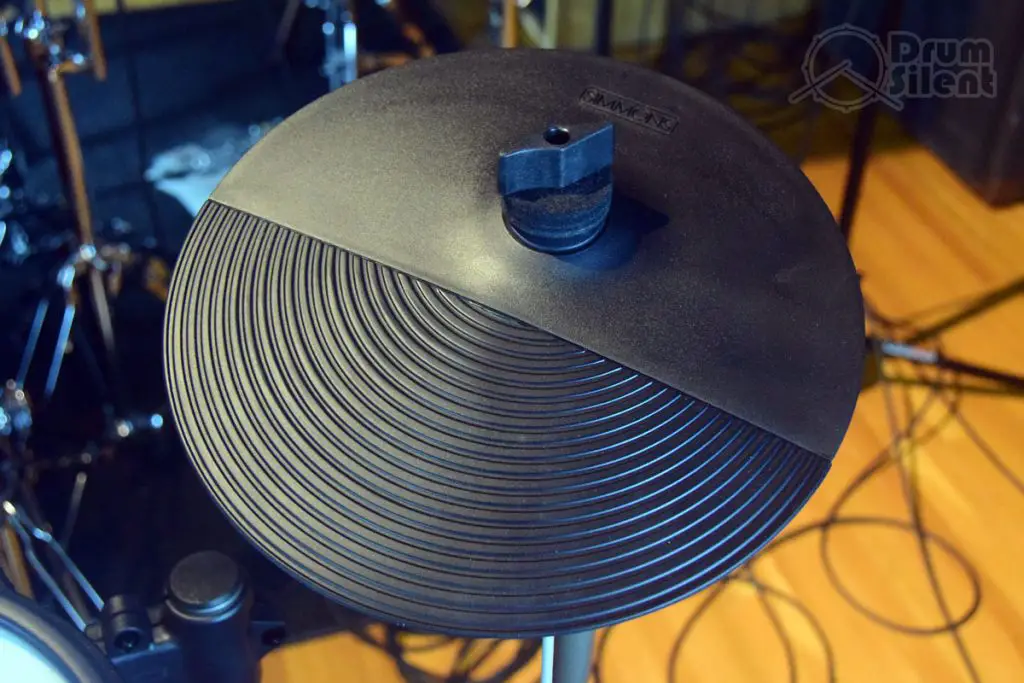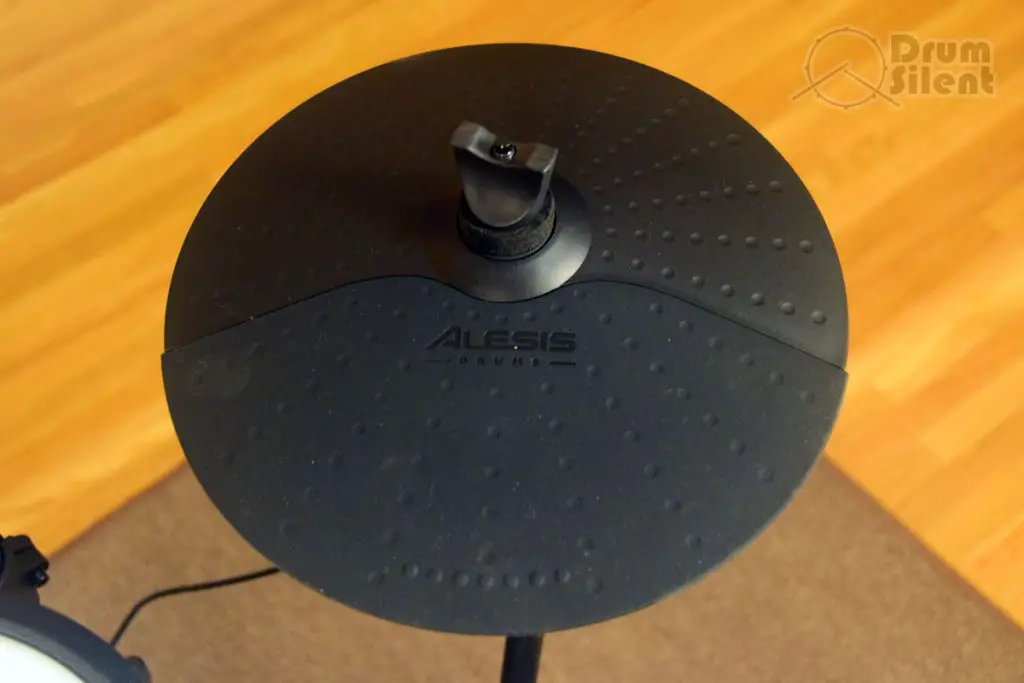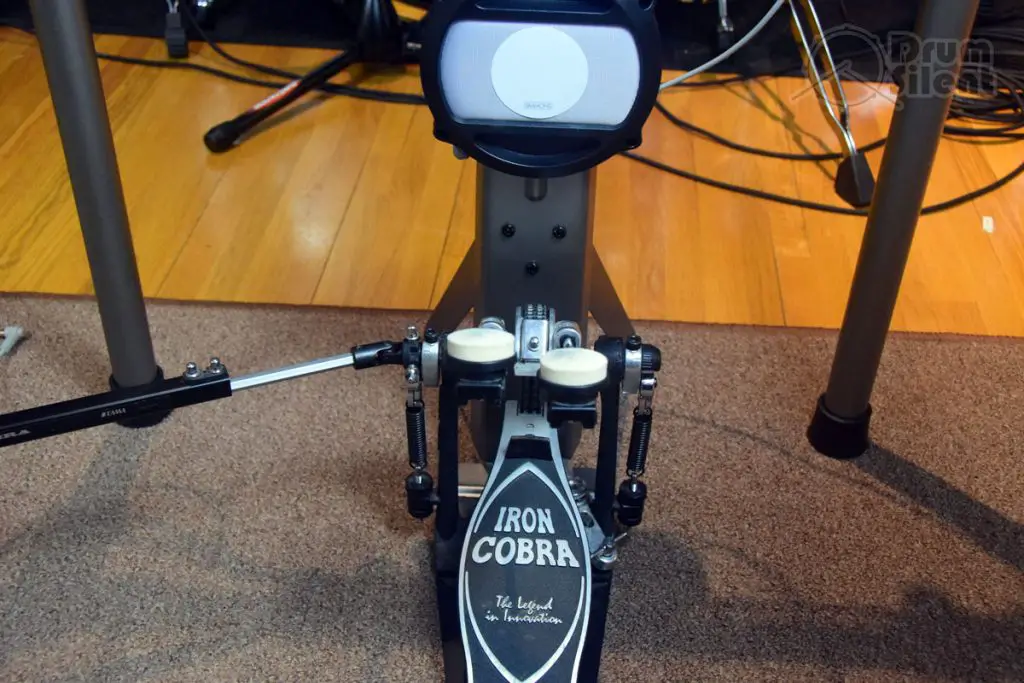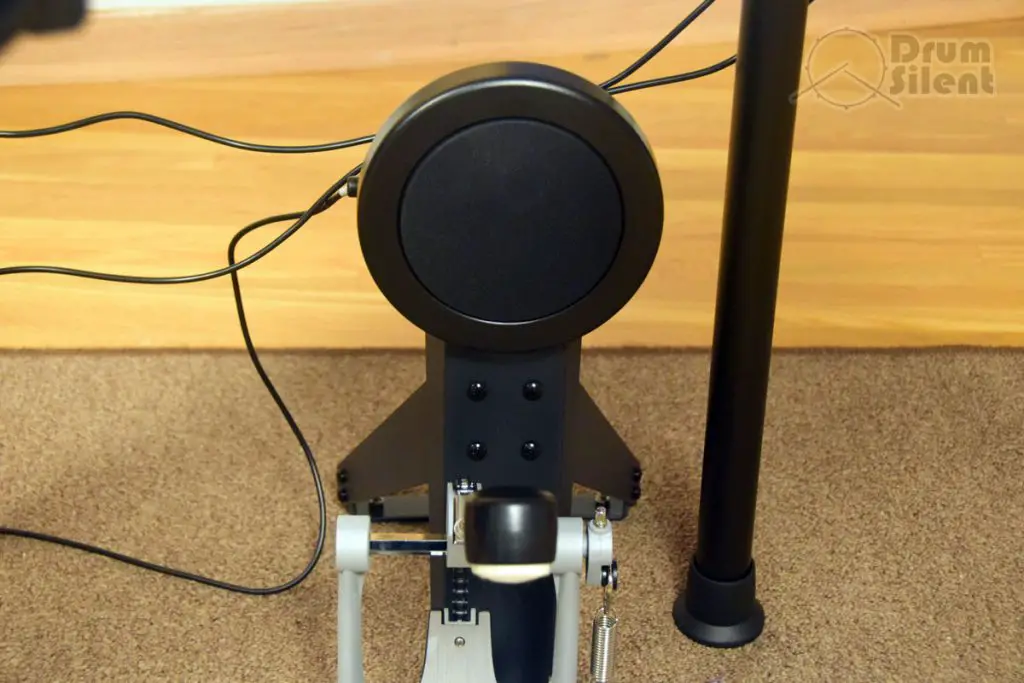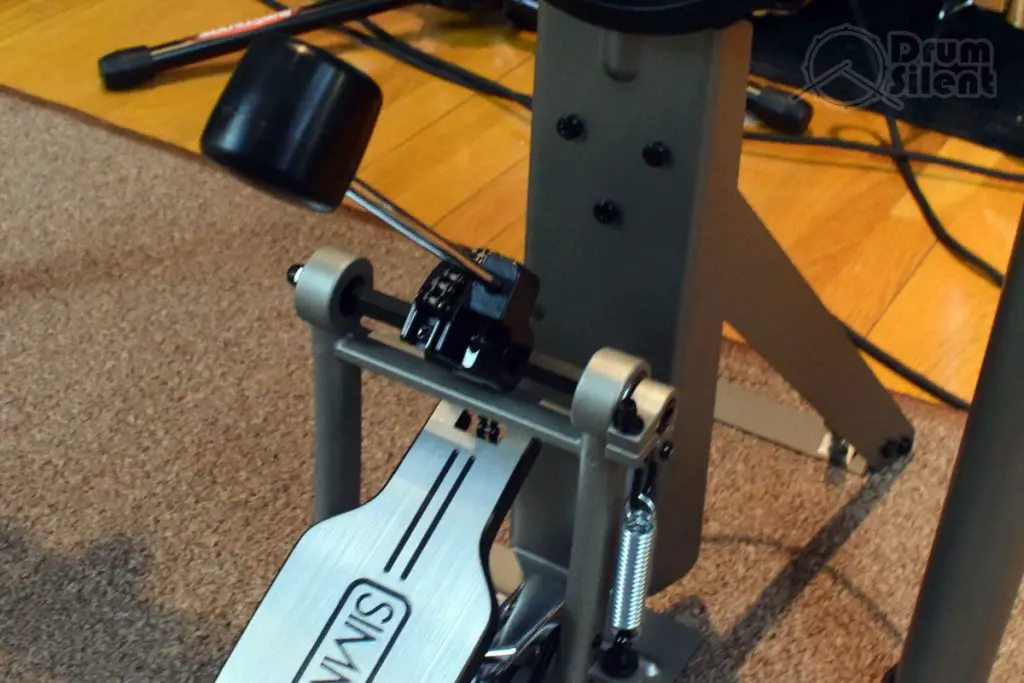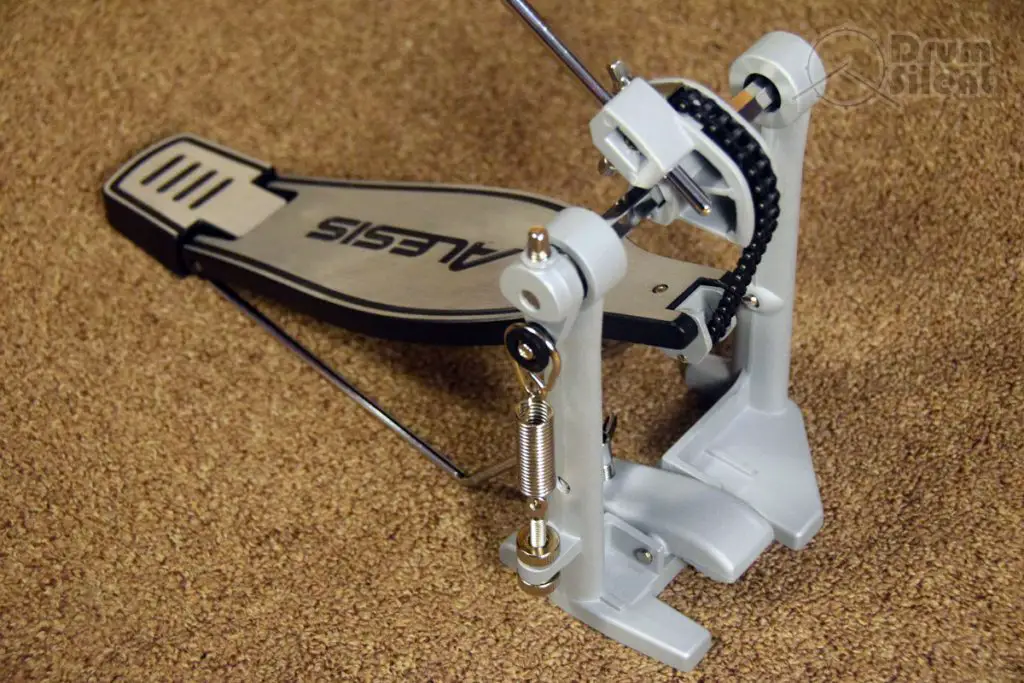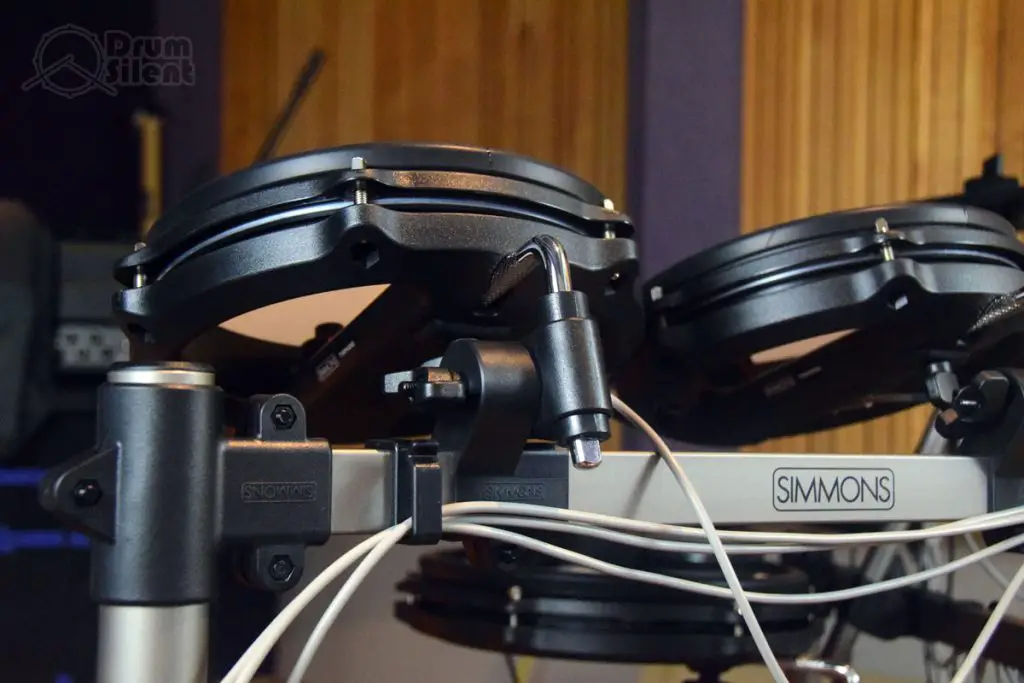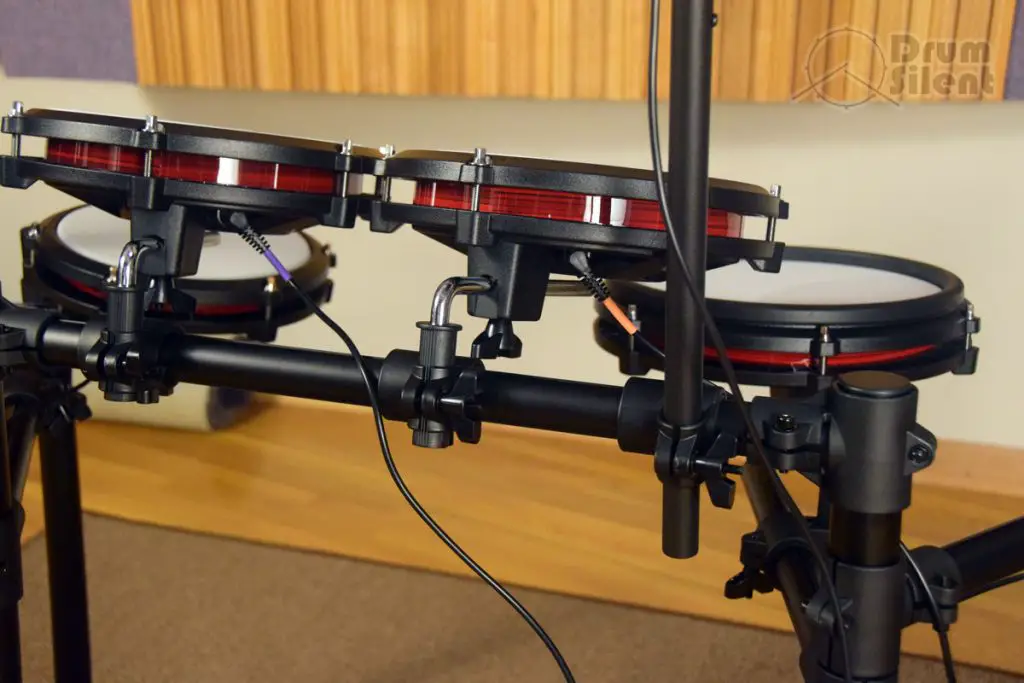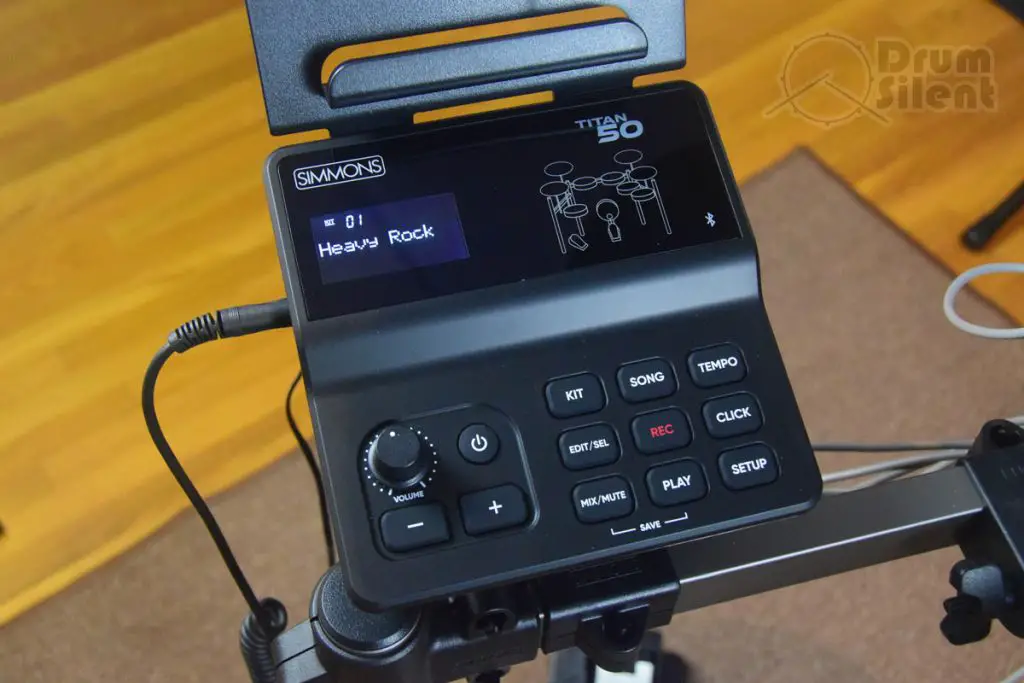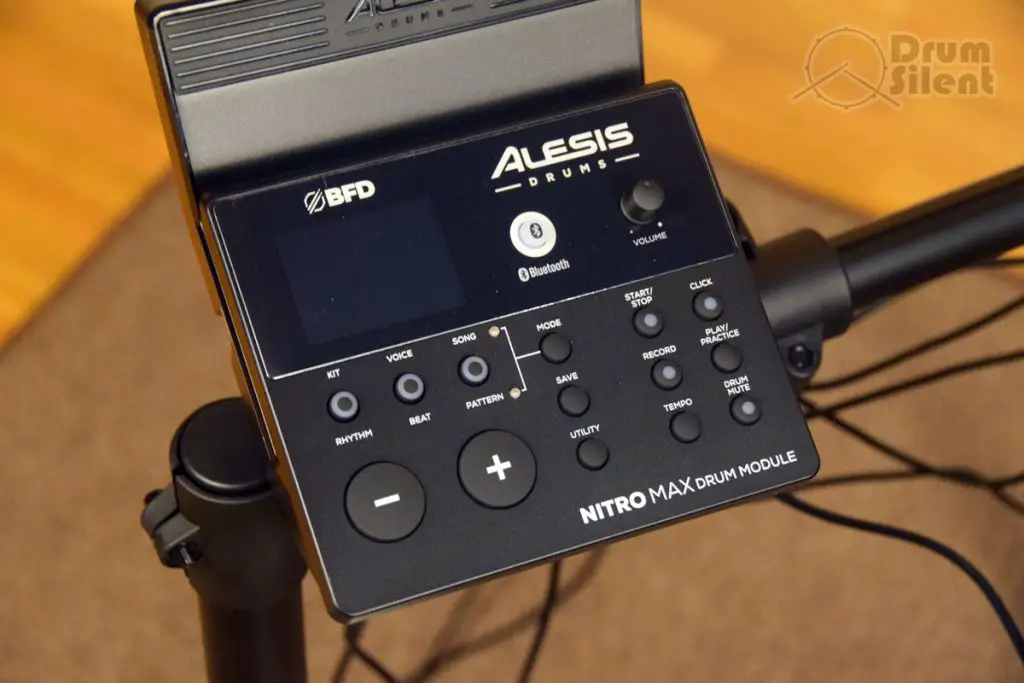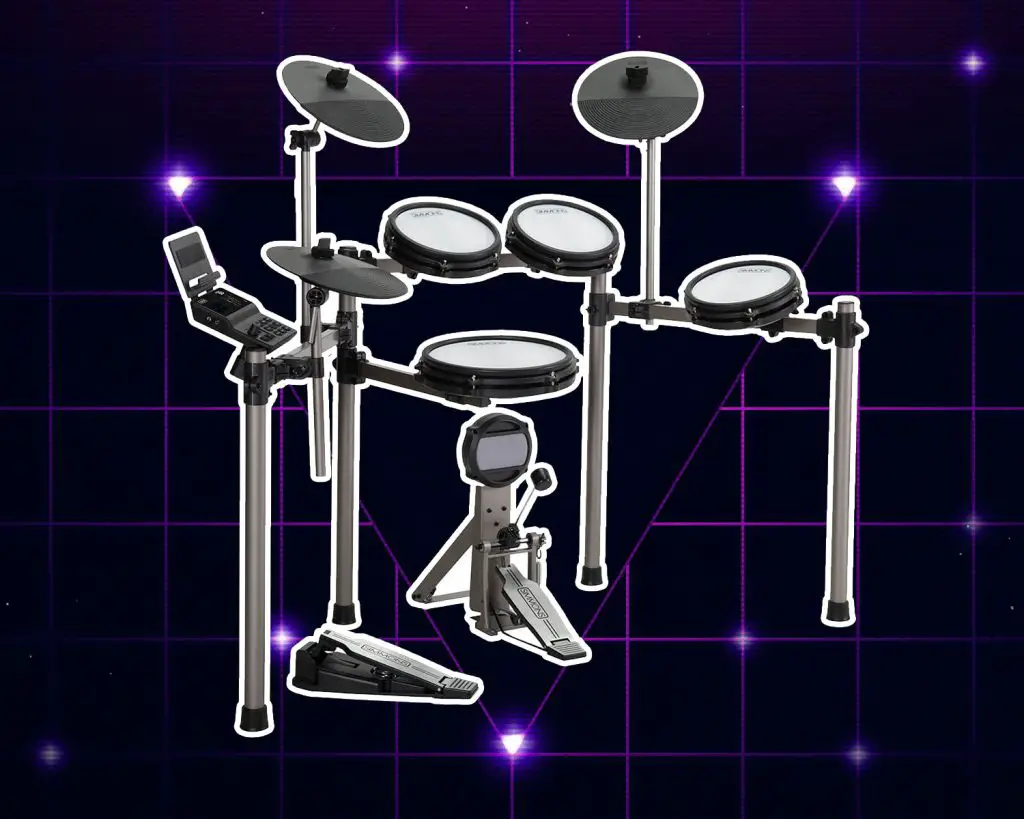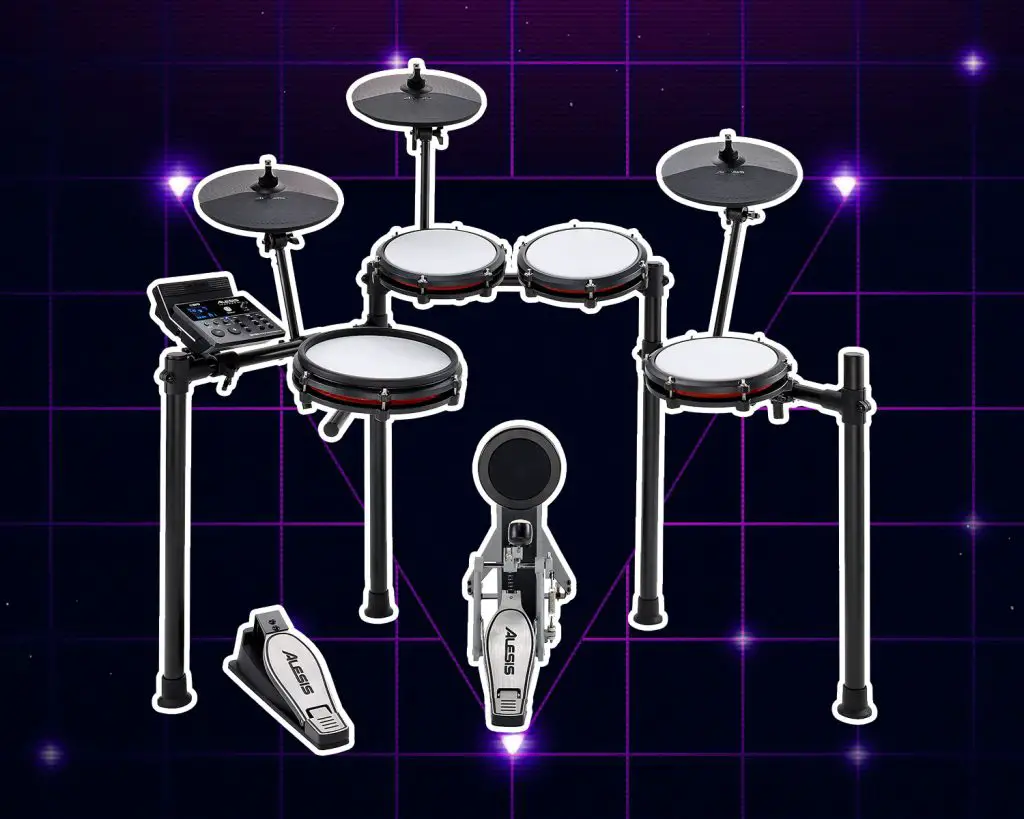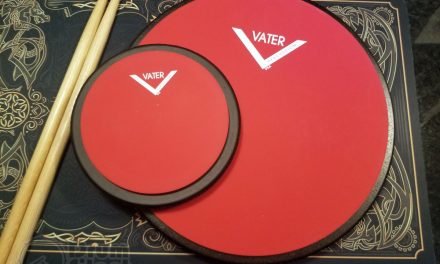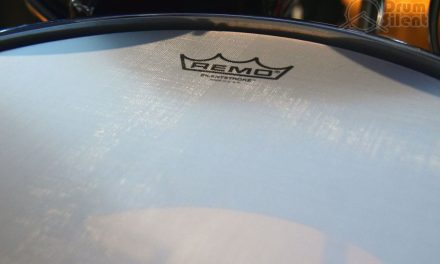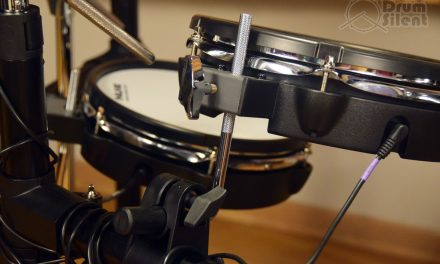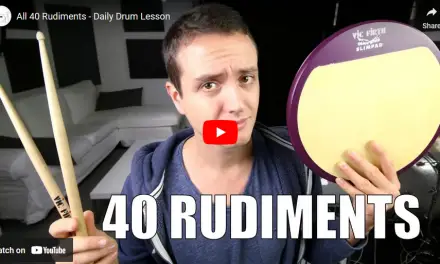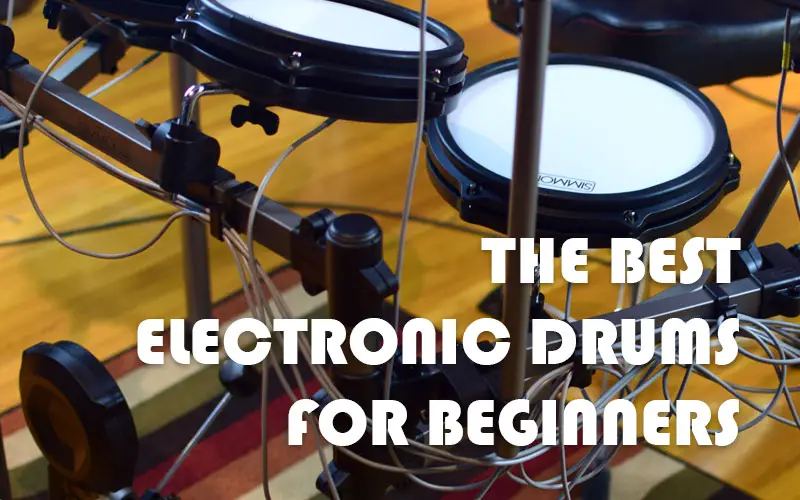The Simmons Titan 50 and Alesis Nitro Max drum kits are both pretty similar in terms of features and price, but there are some key differences to consider if you are trying to decide between the two. Let’s take a look at how they stack up against each other.
The Snare Pad
Both snare pads on the kits offer similar features. They are both dual zone pads with 2-ply mesh heads. They both have open bottoms on the pads for free flowing air. They both can do rim shots in addition to head and rim strikes. I found the biggest difference to be in sensitivity around the head. The Titan 50 felt more responsive around the entire surface with only a little fading when you get further away towards the far edge of the pad. The Nitro Max snare pad is pretty hot in the center and fades more as you get towards the edges of the head all the way around.
The Tom Pads
The tom pads on the kit are pretty similar. They are all 8 inch, single pads on both kits. Both the Titan 50 and the Nitro Max tom pads have a single sensor towards the front of the pad and it produces similar results, with a little fading in sensitivity towards the far edge of the head on the pads. The Titan 50 toms have more of a traditional rim height, while the Nitro Max toms have rims that are about the same height as the head. This makes the Nitro Max toms easier to play since the rims don’t get in the way, in my opinion.
The Hi-Hat Pad
Both kits have 10-inch single zone hi-hat pads with no choke. The pedals feel similar, but I think I like the response of the Nitro Max hi-hat pedal a little more than the Titan 50. It feels just slightly more responsive to quick foot movements. Both kits have similar sound response with closed, half-open and fully open sounds. They both have foot tap hi-hat sounds. The Nitro Max can also do foot splashes whereas the Titan 50 doesn’t have foot splashes. I find the foot splashes a little hard to activate on the Nitro Max though.
The Crash Cymbal Pad
The crash pads are pretty much the same in terms of functionality on both kits. They are both 10 inch pads with the trigger zone facing the drummer. They both have choke zones. I find them both to feel about the same during play.
The Ride Cymbal Pad
The ride cymbal pad is also pretty much the same between these two kits. They both have 10 inch, single zone ride pads and there are no bell zones on either. They both feel about the same during play. They both can generate a bell sound via most kits in their respective modules simply by striking the pad harder than normal.
The Kick Tower
The kick pads are a little different between these two kits. The Titan 50 kick tower has a pad that is 6 inches wide and it does a better job at supporting double kick pedals. The Nitro Max kick tower pad is only 5 inches wide and it can be a tight fit for many double pedals. Both kick pads work fine with single pedals, so no issues there. In terms of feel and acoustic noise they are pretty similar, with a hard surface underneath light padding.
The Kick Pedal
Both of these kits include kick pedals, which is great for beginner drummers who might not already have some drum gear. Both pedals are fairly basic, budget level kick pedals without many bells-and-whistles. I think they both feel about the same between both kits. I personally prefer the kick pedal that comes with the Titan 50 since the beater angle can be adjusted. The Alesis pedals beater angle seems to only be able to lock into one angle position at roughly 45 degrees, and I couldn’t find a way to adjust it.
The Rack
The racks are where we find some bigger differences between the two kits. while both racks are similar in size, the Titan 50 rack is better all the way around in my opinion. First of all, the Titan 50 rack comes fully assembled, whereas the Nitro Max rack does not. The Titan 50 rack also feels more stable and less wobbly when setup. I felt like I could spread the Titan 50 rack out more whereas I needed to angle the outer posts on the Nitro Max rack inwards more to keep it stable. I could also get the snare drum to sit just a little higher on the Titan 50 rack, which I preferred.
The Drum Module
25 drum kits, 10 user kit slots, 187 drum sounds. Adjustable levels, pitch, decay, panning and reverb, compression and EQ.
These drum modules have some differences but as far as depth of features goes they are pretty similar. They offer similar features in terms of sound editing and utility settings. In terms of sound expansion, Simmons is making new kits that can be loaded into the Titan 50 module via Titan Packs. Alesis doesn’t let you load more kits into the module, but they do include BFD player which needs to be installed on a computer and controlled via MIDI.
I like the sounds on the Titan 50 more than the Nitro Max, the sounds have more depth to them and better sustain. The Nitro Max is using sounds from BFD, and many of the sounds are quite good, but I find a lot of the cymbal sounds lack sustain.
Expandability
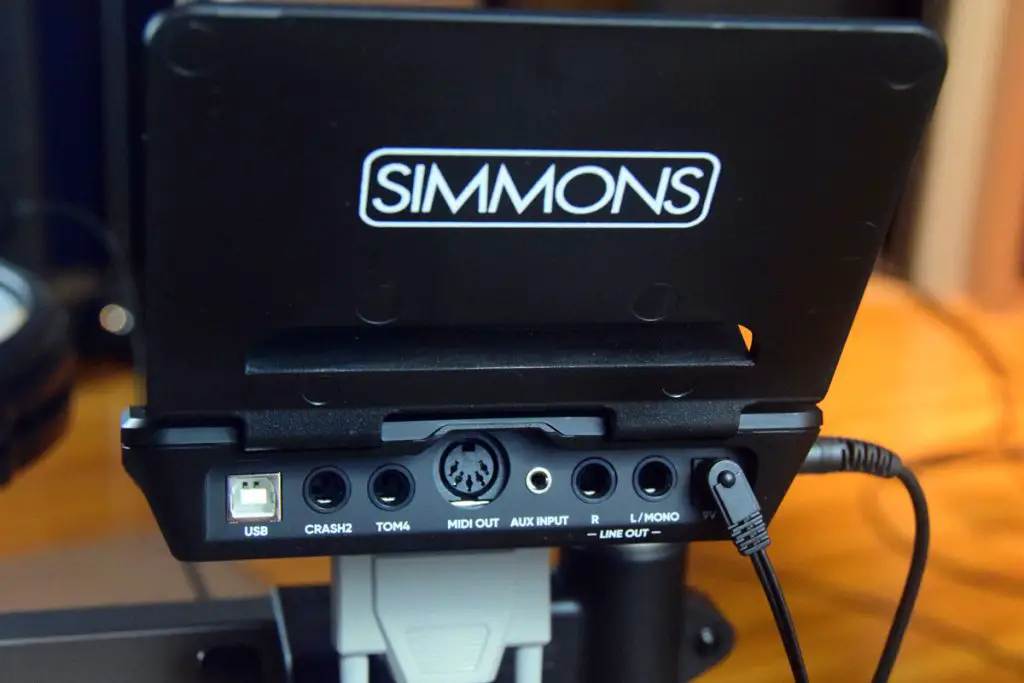
Can add one more tom and crash cymbal
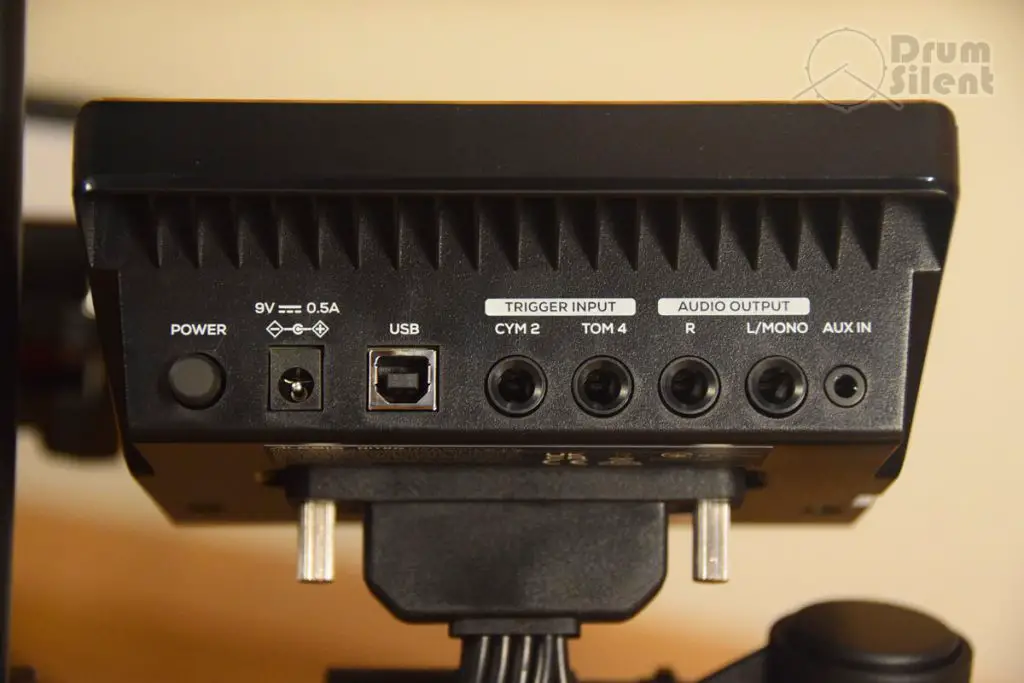
Can add one more tom and crash cymbal
Both of these kits offer the same expansion options. They can both add another crash cymbal and tom pad via the inputs on the back of the modules. Both also have expansion packs available out there that include both the crash and tom pads in a single package.
I would feel more comfortable expanding the Titan 50 over the Nitro Max due to the stability of the racks. The Titan 50 rack can spread out more without leaning and getting wobbly, which makes it easier to add an extra tom to the right side of the rack. Due to the lower stability of the Nitro Max rack when it’s spread out more, I wouldn’t feel comfortable trying to cram another tom on the right side of the rack. Adding another cymbal to either rack isn’t a problem though, in my opinion, since you don’t need as much room to spread out when simply adding a cymbal. So if you want to add both another tom and a cymbal pad, the Titan 50 will be your best bet.
The Wrap Up
If I had to pick one or the other, I’d go with the Titan 50. I like the more stable rack on the Titan 50 and I prefer the drum sounds in the Titan 50 module to those in the Nitro Max module. That’s not to say the Nitro Max is a bad kit though, and the Nitro Max is $50 cheaper.

